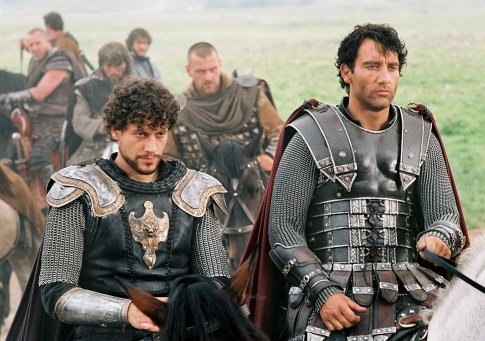King Arthur (2004)

Title: The Epic Tale of Honor and Leadership in “King Arthur” (2004)
Introduction: “King Arthur” (2004), directed by Antoine Fuqua, reimagines the classic Arthurian legend with a fresh and gritty perspective. This film, featuring Clive Owen as King Arthur, offers a nuanced interpretation of the legendary British monarch and his knights, focusing on themes of honor, leadership, and the struggle for unity in a time of chaos.
Plot Summary: Set in the early 5th century, “King Arthur” presents a historical take on the Arthurian legend, diverging from the traditional magical elements associated with the story. The film follows Arthur and his knights, who are portrayed as Roman soldiers tasked with defending the British Isles from invading Saxons. Their journey is not just a battle against external forces but also a quest to bring together disparate tribes and peoples to forge a unified kingdom.

Themes and Significance:
- Leadership and Honor: At the heart of “King Arthur” is a profound exploration of leadership and honor. Arthur, as a leader, embodies the virtues of courage, integrity, and selflessness. The film portrays his struggle to lead with honor in a world where loyalty and trust are often in short supply. Arthur’s commitment to unifying his people and fighting for a common cause underscores the importance of noble leadership in times of conflict.
- Historical Realism vs. Myth: Unlike many adaptations that delve into the realm of fantasy, this version of “King Arthur” opts for a historical approach, presenting a more realistic depiction of the time. The film blends historical events with the mythological aspects of the Arthurian legend, offering a grounded portrayal that highlights the challenges of leadership in a tumultuous era.
- Unity and Conflict: The theme of unity is central to the narrative, as Arthur seeks to unite the warring tribes of Britain against a common enemy. The film illustrates the difficulties of forging alliances and the sacrifices required to achieve a greater good. The internal conflicts among Arthur’s knights and the external threats from the Saxons reflect the complexities of building a cohesive society.
- Cultural and Political Commentary: “King Arthur” also serves as a commentary on cultural and political dynamics, examining the interplay between different groups and the impact of leadership decisions on societal cohesion. The film’s portrayal of Arthur’s efforts to bridge cultural divides and establish a stable realm offers insights into the challenges of governance and diplomacy.












